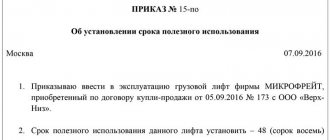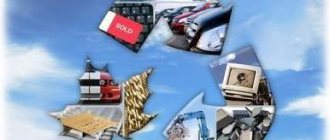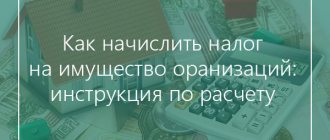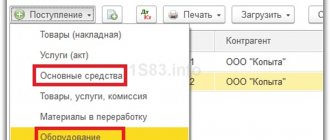The key resource of any manufacturing company is fixed assets, the analysis of which traditionally includes an assessment of their condition and efficiency of use.
The algorithm for analyzing fixed assets includes the following procedures:
Analysis of the availability, structure and movement of fixed assets
Analysis of the movement of fixed assets
Analysis of indicators of use of fixed assets
Capacity utilization analysis
We note that in the process of analysis it is necessary to pay attention to information about other uses of fixed assets, namely about fixed assets received and leased. It should be taken into account that fixed assets leased increase the company’s production capabilities, and fixed assets leased reduce its production capabilities.
The objectives of the analysis of fixed assets of an enterprise are:
- determining the provision of structural divisions and the enterprise as a whole with fixed assets;
- level of use of fixed assets according to general and specific indicators;
- determining the reasons for their changes;
- calculation of the impact of the use of fixed assets on the volume of production, profitability, etc.;
- determining the degree of utilization of the organization’s production capacity;
- identification of reserves to increase the efficiency of use of fixed assets.
Calculation of the average cost of fixed assets
The average cost of fixed assets (FPE) has a calculation algorithm similar to that used in determining the average annual (i.e., average for the year) cost, but is used when calculating advance payments for property tax for reporting periods, the duration of which is 1 quarter, half a year and 9 months (clause 2 of article 379 of the Tax Code of the Russian Federation).
The algorithm for calculating the average cost of an OS is fixed in paragraph. 1 clause 4 art. 376 Tax Code of the Russian Federation. It involves the summation of the residual value of objects for the first days of the months of the reporting period and for the first day of the month occurring after its completion. The amount is divided by the number of terms involved in the calculation. Data on objects do not take part in the calculation:
- not subject to property tax;
- subject to this tax from another object (cadastral value).
For more information about fixed assets valued at cadastral value, read the article “For which real estate objects the tax base is calculated based on cadastral value .
To make the explanation clearer, let’s determine the average cost of an operating system using data as an example.
Example 1
Express Stirka LLC operates as a self-service laundry in Moscow. The company owns taxable assets in the form of a power line and non-residential premises for a laundry. The premises are an object for which the tax base is the cadastral value, since it is intended to serve the household needs of the population (subclause 2, clause 4, article 378.2 of the Tax Code of the Russian Federation). Based on the results of the 1st quarter, the accounting data reflects the following data:
| date | Power line, cost, rub. | Non-residential premises, cost, rub. | ||||
| Initial | Depreciation | Residual | Initial | Depreciation | Residual | |
| 01.01 | 312 730 | 3 679 | 309 051 | 3 120 820 | 36 716 | 3 084 104 |
| 01.02 | 312 730 | 7 358 | 305 372 | 3 120 820 | 73 432 | 3 047 388 |
| 01.03 | 312 730 | 11 037 | 301 693 | 3 120 820 | 110 148 | 3 010 672 |
| 01.04 | 312 730 | 14 716 | 298 014 | 3 120 820 | 146 864 | 2 973 956 |
In calculating the average cost of fixed assets, the residual value of the power line is used, defined as the difference between the original cost and depreciation. It is equal to:
(309,051 + 305,372 + 301,693 + 298,014) / 4 (number of reporting months + 1) = RUB 303,533.
All the details of calculating the average value of property for calculating advance payments for property tax were explained by ConsultantPlus experts. Get trial access to the K+ system for free and go to the Corporate Property Tax Guide.
The tax on non-residential premises based on cadastral value is calculated separately.
For the algorithm for calculating tax on such OS, see the article “Step-by-step instructions for calculating property tax from cadastral value” .
Useful life of a fixed asset item
This is the period during which its use will bring economic benefits (income) to the organization (clause 8 of FSBU 6/2020).
For individual fixed assets, the useful life is determined based on the amount of production (volume of work in physical terms) that the organization expects to receive from the use of the fixed asset (ibid.).
And, according to clause 9, the useful life is determined from:
- the expected period of operation, taking into account productivity or capacity, regulatory, contractual and other operating restrictions, the intentions of the organization's management regarding the use of the facility;
- expected physical wear and tear, taking into account the operating mode (number of shifts), repair system, natural conditions, the influence of an aggressive environment and other similar factors;
- expected obsolescence, in particular as a result of changes or improvements in the production process or as a result of changes in market demand for products or services produced by fixed assets;
- plans for the replacement of fixed assets, modernization, reconstruction, technical re-equipment.
By and large, I did not find any significant difference between the definition of useful life in FSB 6/2020 and in PBU 6/01 (clause 4 and clause 20). Yes, there are some stylistic differences, but nothing more.
In my opinion, most organizations, as before, will take the Classification of Fixed Assets, approved by Decree of the Government of the Russian Federation No. 1 dated January 1, 2002, as a guide to action. FAS 6/2020 does not say this directly, but it is not prohibited, which means - allowed.
Although nothing prevents you from using other information - manufacturers’ recommendations, a documented and technically sound conclusion of the commission on fixed assets, etc.








